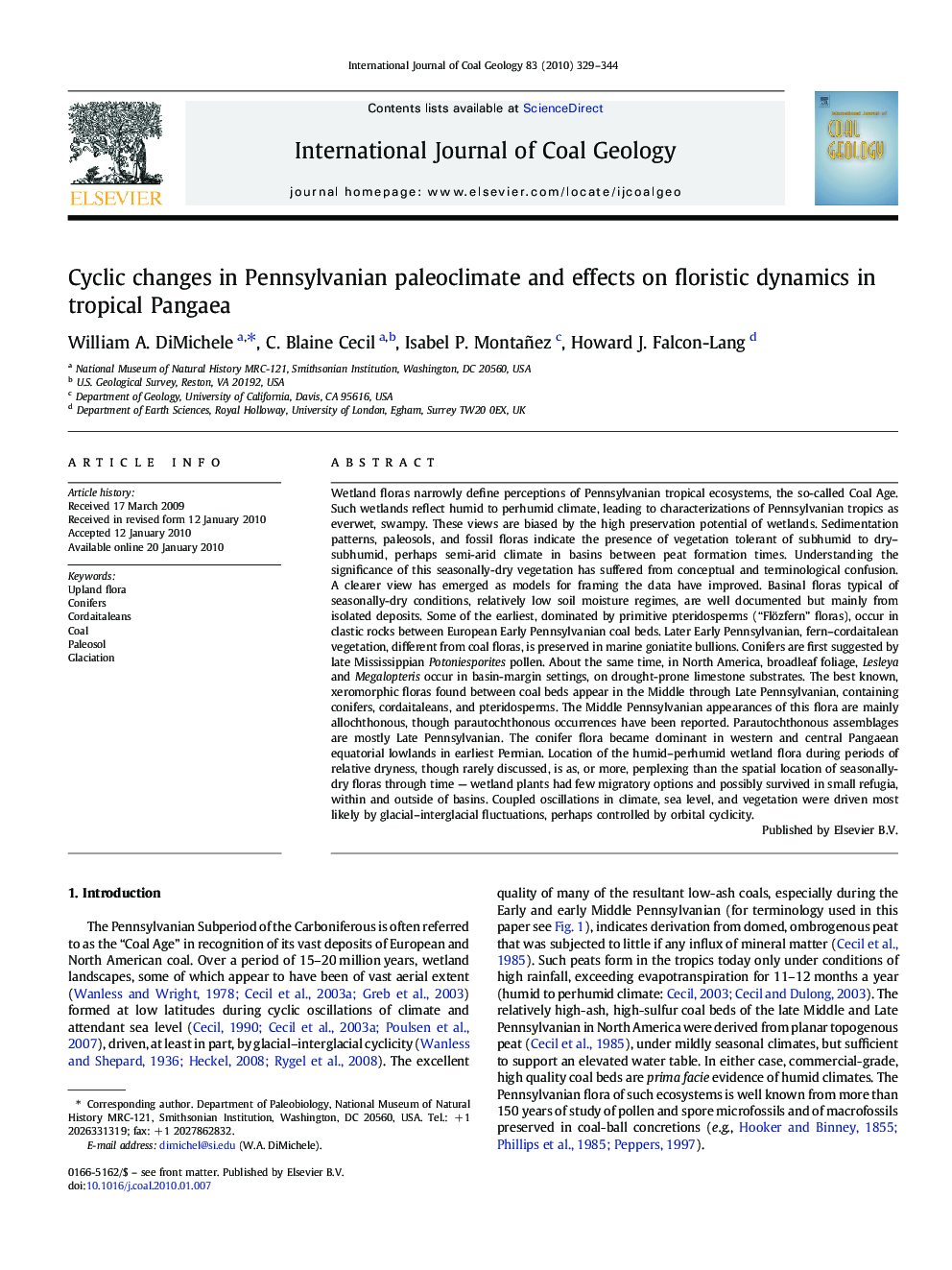| کد مقاله | کد نشریه | سال انتشار | مقاله انگلیسی | نسخه تمام متن |
|---|---|---|---|---|
| 1753635 | 1522620 | 2010 | 16 صفحه PDF | دانلود رایگان |

Wetland floras narrowly define perceptions of Pennsylvanian tropical ecosystems, the so-called Coal Age. Such wetlands reflect humid to perhumid climate, leading to characterizations of Pennsylvanian tropics as everwet, swampy. These views are biased by the high preservation potential of wetlands. Sedimentation patterns, paleosols, and fossil floras indicate the presence of vegetation tolerant of subhumid to dry–subhumid, perhaps semi-arid climate in basins between peat formation times. Understanding the significance of this seasonally-dry vegetation has suffered from conceptual and terminological confusion. A clearer view has emerged as models for framing the data have improved. Basinal floras typical of seasonally-dry conditions, relatively low soil moisture regimes, are well documented but mainly from isolated deposits. Some of the earliest, dominated by primitive pteridosperms (“Flözfern” floras), occur in clastic rocks between European Early Pennsylvanian coal beds. Later Early Pennsylvanian, fern–cordaitalean vegetation, different from coal floras, is preserved in marine goniatite bullions. Conifers are first suggested by late Mississippian Potoniesporites pollen. About the same time, in North America, broadleaf foliage, Lesleya and Megalopteris occur in basin-margin settings, on drought-prone limestone substrates. The best known, xeromorphic floras found between coal beds appear in the Middle through Late Pennsylvanian, containing conifers, cordaitaleans, and pteridosperms. The Middle Pennsylvanian appearances of this flora are mainly allochthonous, though parautochthonous occurrences have been reported. Parautochthonous assemblages are mostly Late Pennsylvanian. The conifer flora became dominant in western and central Pangaean equatorial lowlands in earliest Permian. Location of the humid–perhumid wetland flora during periods of relative dryness, though rarely discussed, is as, or more, perplexing than the spatial location of seasonally-dry floras through time — wetland plants had few migratory options and possibly survived in small refugia, within and outside of basins. Coupled oscillations in climate, sea level, and vegetation were driven most likely by glacial–interglacial fluctuations, perhaps controlled by orbital cyclicity.
Journal: International Journal of Coal Geology - Volume 83, Issues 2–3, 1 August 2010, Pages 329–344